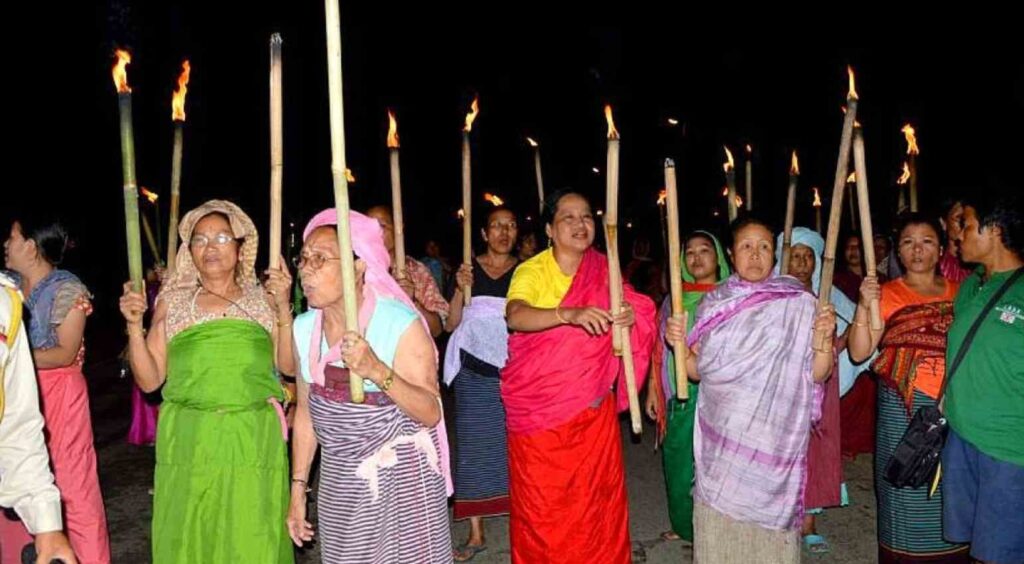
The Meira Paibi movement in Manipur offers several valuable lessons in terms of grassroots organizing, community mobilization, and sustained activism. These lessons can inspire and guide other movements seeking social change and justice.
Firstly, the Meira Paibi movement highlights the power of collective action. The movement emerged from the unity and solidarity of women in Manipur, who recognized that their strength lay in coming together to address the challenges they faced. By organizing themselves into groups and creating networks, they were able to amplify their voices and exert greater influence. This underscores the importance of building strong networks and coalitions to mobilize communities and effect meaningful change.
Secondly, the Meira Paibi movement exemplifies the significance of raising awareness and engaging the wider community. The movement utilized various strategies such as peaceful protests, sit-ins, and candlelight vigils to draw attention to the issues they were fighting against. Their actions helped to educate the public and galvanize support for their cause. This emphasizes the need to effectively communicate and engage with the broader community to build empathy, understanding, and solidarity.
Another crucial lesson from the Meira Paibi movement is the value of grassroots organizing and community participation. The movement originated from self-help groups and community organizations that provided a platform for women to share their experiences and collectively resist injustice. This bottom-up approach ensured that the movement was rooted in the needs and aspirations of the local community. It highlights the importance of empowering communities to take ownership of their struggles and actively participate in decision-making processes.
Furthermore, the Meira Paibi movement demonstrates the significance of sustaining activism over the long term. The movement’s impact did not happen overnight but was the result of sustained efforts and perseverance. Meira Paibis remained committed to their cause despite challenges and obstacles, adapting their strategies when necessary. This underscores the need for resilience, patience, and a long-term vision in pursuing social change.
Importantly, the Meira Paibi movement also underscores the intersectionality of social issues. While the movement initially focused on human rights violations, it expanded its scope to address gender inequality, environmental conservation, and community development. This recognition of the interconnectedness of various forms of oppression emphasizes the importance of adopting an inclusive and holistic approach to activism.
In summary, the Meira Paibi movement offers valuable lessons in grassroots organizing, community mobilization, and sustained activism. These lessons include the power of collective action, the significance of raising awareness and engaging the wider community, the value of grassroots organizing and community participation, the need for sustained efforts and resilience, and the recognition of intersectionality in addressing social issues. By drawing inspiration from the Meira Paibi movement, other movements can learn from its strategies and experiences to create meaningful and lasting change in their own contexts.
To What Extent Has The Meira Paibi Movement Been Successful In Bringing About Tangible Changes And Improvements In The Lives Of Marginalized Communities In Manipur?
How Has The Meira Paibi Movement Challenged Traditional Gender Roles And Empower Women In Manipur?






